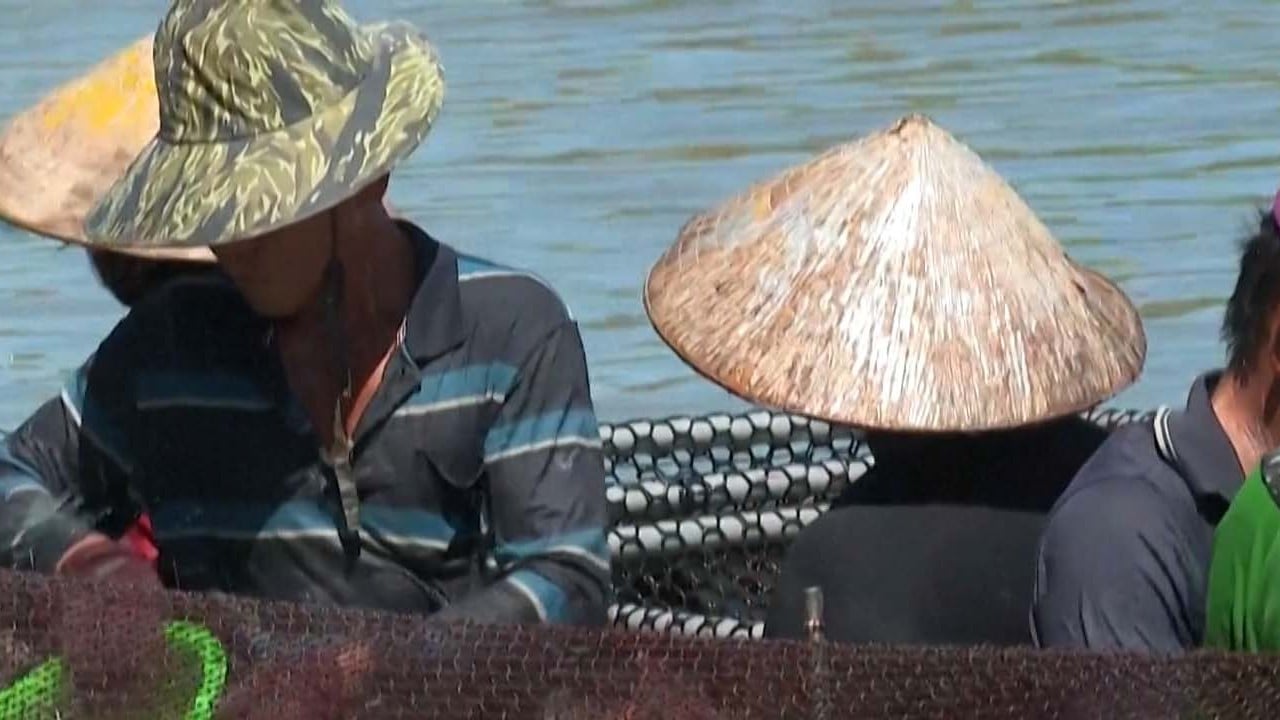
Taiwanese forces bring down drone over tiny island near Chinese mainland
- The defence ministry in Taipei said the unidentified drone had been shot down over Shiyu after it failed to heed warnings to leave the restricted area
- Diplomatic observers said the downed unmanned aerial vehicle was civilian, something that reduced the risk of a military escalation
The civilian-operated drone flew into restricted waters near Shiyu at noon on Thursday, and troops based on the island shot it down after it failed to heed warnings, according to the island’s defence ministry.
‘Highly likely’ Taiwan attack may cut internet cables, causing global costs
It was the first time Taiwanese forces have shot down a drone over territory controlled by Taipei.
Major General Chang Jung-shun, a spokesman for the Kinmen Defence Command, said the drone flew over from the mainland city of Xiamen, which is just 4km (2.5 miles) away.
“As soon as we spotted the unidentified drone, we followed the standard operation procedures by warning it off before shooting it down after it failed to leave the area soonest,” Chang said.
He said the drone had not flown all the way over Shiyu and was still over restricted waters when it was taken down. “We will continue to step up monitoring and remain on guard to maintain security in our garrisoned areas,” he added.
Taiwan also said on Tuesday its forces had fired on another drone flying over Erdan, which had also been launched from Xiamen. The drone retreated back towards the mainland after the troops opened fire.
On Monday, Taiwan’s army said its four-step protocol for drone encounters involved “firing warning flares, reporting the incursion, expelling the drone and ultimately shooting it down”.
Washington said the visit by Pelosi – the most senior US politician to travel to the island in 25 years – did not signal a change to its Taiwan policies, but Beijing took it as a show of support for the pro-independence camp.
Beijing sees the island as part of China and has never ruled out the use of force to take control. Most countries, including the US, do not recognise Taiwan as an independent state. Washington, however, opposes any attempt to take the island by force.
The downing of the drone highlights the ongoing tensions in the region, where the PLA has shown no sign of easing its operations in the waters around Taiwan.
Zhu Fenglian, a spokeswoman from the mainland’s Taiwan Affairs Office, criticised the Taiwanese authorities for trying to stoke cross-strait tensions and escalate confrontation, something she said was “absurd and ridiculous.”
Wang Wenbin, a spokesman for the foreign ministry in Beijing, told a news conference it was meaningless for the island’s authorities to play up tensions in the Taiwan Strait.
However, analysts said the downing of the drone was unlikely to lead to a cross-strait conflict as the island has the right to deal with unidentified aerial vehicles over its restricted areas.
Chiu Chui-cheng, deputy chairman of the Mainland Affairs Council, Taiwan’s top cross-strait policy planner, said all civilian aerial vehicles need approval to enter Taiwan’s restricted areas, including offshore isles such as Quemoy, Matsu, Dongyin and Wuqiu.
“Those that fail to do so will be warned off, dispersed and forced down,” he said.
Yue Gang, a retired PLA colonel, said that mainland will not retaliate directly but might send military drones close to Tawain itself.
“The drone was shot down by a light weapon, which shows it was flying at a low height and is a civilian one,” he said.
“The mainland will not directly attack with artillery fire or missiles to retaliate against the Taiwanese army.”
He described the use of drone tactics as a form of “psychological warfare”, and said it was possible that the PLA might send military or civilian drones towards Taiwan at an altitude of more than 4,000 metres (13,000ft) – a height beyond the reach of Taiwan’s air defence weapons.
How would Taiwan’s US$143 million defence system ward off Beijing drones?
Wang Kung-yi, head of Taiwan International Strategic Study Society, a Taipei-based think tank, said while it remained unknown if the PLA had orchestrated the civilian drone flight, it was unlikely that the incident would trigger a conflict
“After all, it is a civilian drone, not a military one,” Wang said. “But if it was a military drone, this would be a more serious case and might easily lead to conflict.
Su Tzu-yun, a senior researcher at the Institute for National Defence and Security Research, a Taiwanese government think tank, said according to international law and customs, the island’s military had the right to shoot down any unidentified vehicle that defied repeated warnings by flying into Taiwan’s restricted areas if it deemed the object posed a threat.

Su agreed that bringing down a military vehicle was a more serious issue and said Taiwan should lay down its bottom line for dealing with grey-zone manoeuvres by the PLA, including sending civilian drones into Taiwan’s restricted air space and waters.
“Through issuing base or red lines, Taiwan is able to set the rule that any incoming objects from the enemy’s side could be taken down by its military,” Su added.
He also suggested that Taiwan’s military swiftly deploy electronic devices to cause mainland Chinese drones flying in restricted areas to malfunction.
Additional reporting by Amber Wang



